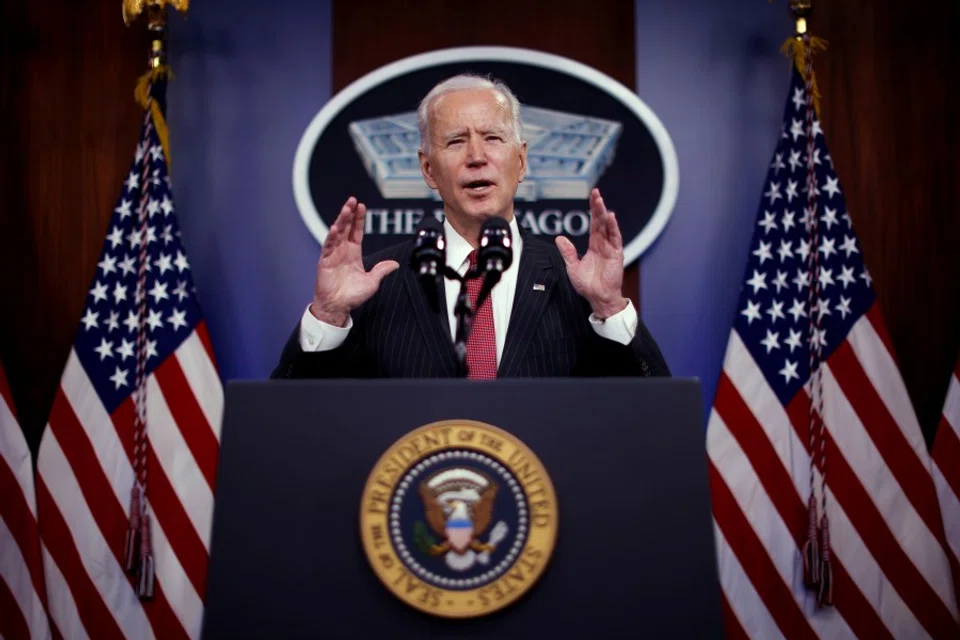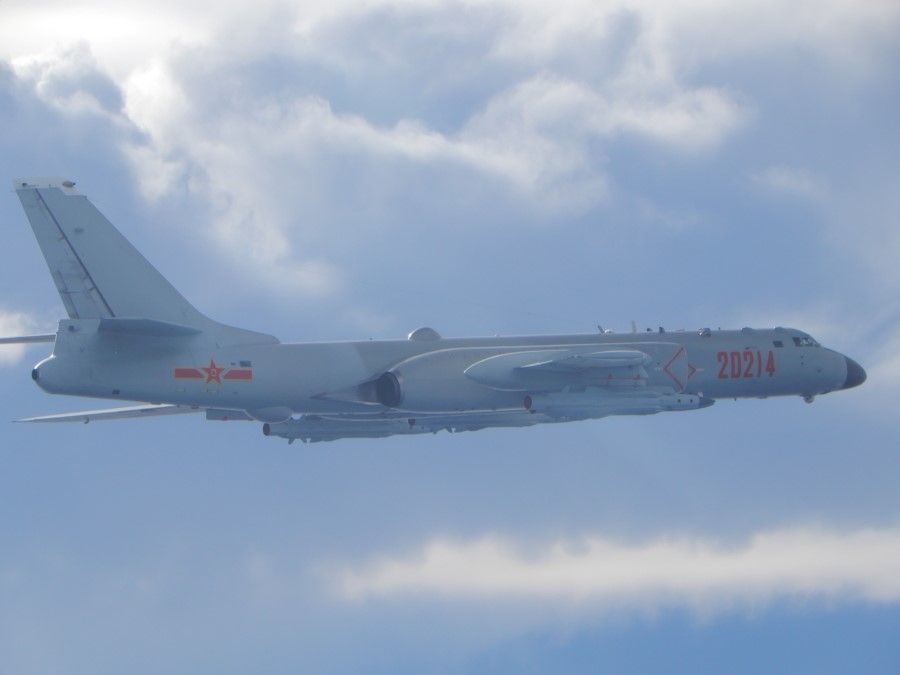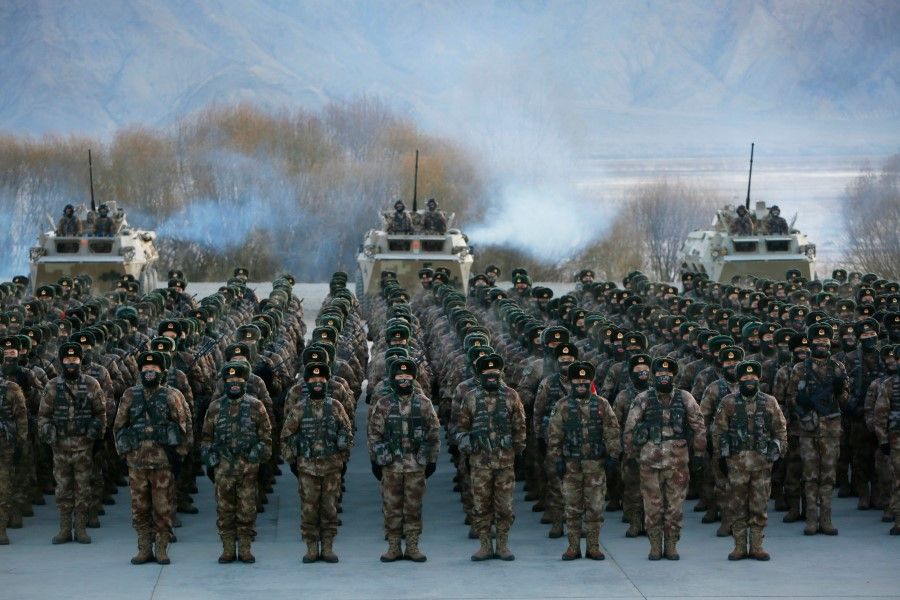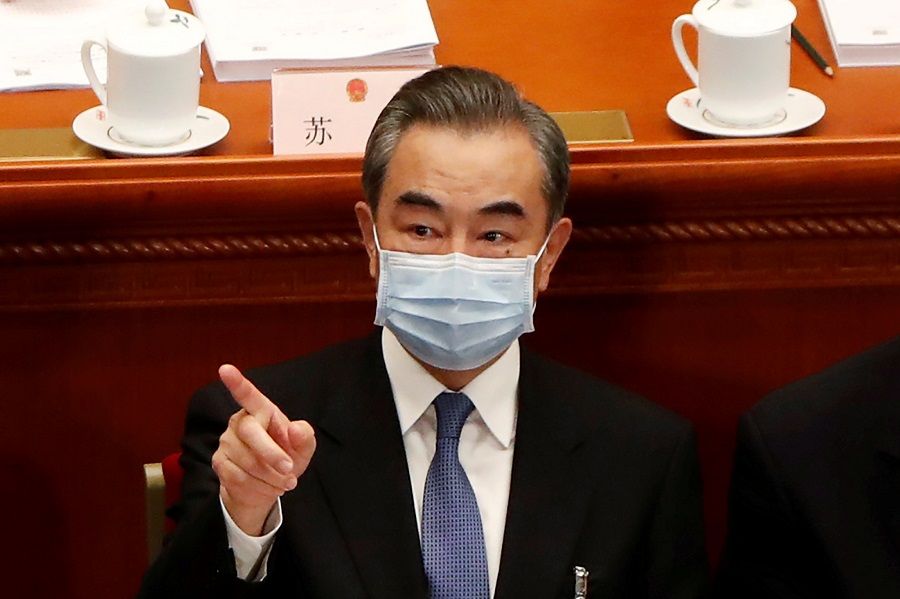Why Biden will continue the trade war with China to the 'end'

US President Joe Biden will continue the China-US trade war - not because he wants to, but because the Biden administration cannot end the wide-ranging areas of competition between the US and China.
The time of win-win cooperation in China-US trade ties is over. The level of mutual containment, challenge, and competition between China and the US is far greater than the level of cooperation. As an important component of this competition, China-US trade relations will determine if China or the US will win this tussle of values and political systems, and even get to lead the world.
Trade war and impetus from military insecurity
First, through the prism of military competition, the Biden administration is unlikely to end the war of technology that is already under way. This technological competition is linked to who wins the strategic duel between the two countries, particularly in the military field. The national security of China and the US is dependent on military strength, and to preserve its military advantage over China, the US is doing all it can to stop American advanced technologies from getting to China.
The US felt that China's plan of "military-civilian integration" (军民融合) was meant to blur the lines between the military sector and the civilian economy, and a way of setting its sights on emerging markets and advanced technology (especially AI) to build the world's most technologically advanced army.
A report titled "Artificial Intelligence and National Security" (released in August 2020 and updated in November 2020) by the US Congressional Research Service noted that China is the US's strongest competitor in cutting edge military technology such as AI and quantum computing. It said, "China is by far the United States' closest competitor in the international AI market... Recent Chinese achievements in the field demonstrate China's potential to realise its goals for AI development." The report added that military AI applications could be used for counter-espionage and to aid military objectives.

The US felt that China's plan of "military-civilian integration" (军民融合) was meant to blur the lines between the military sector and the civilian economy, and a way of setting its sights on emerging markets and advanced technology (especially AI) to build the world's most technologically advanced army. So, a lot of the China-US trade war is about the US government's export control measures - hitting China's major enterprises with an Entity List that currently runs to over 275 Chinese enterprises and related companies, including Huawei and its 150 related companies. These Chinese companies are all participating in China's military sector.
In August 2020, a report by the Hoover Institution at Stanford University said that cooperation between American and Chinese academics and research institutions has accelerated China's military modernisation. The report said that working with China's military was "unwise and contrary to US national interests", as such large-scale cooperation might grow China's strength as a military opponent of the US. The report suggested that US research institutes adopt risk management and due diligence on collaboration with Chinese partners, to prevent possible aiding of authoritarian regimes or violation of democratic values.
Seeking to narrow the gap between military capabilities
How does the Biden administration see the link between advanced technologies and the military? On 19 January 2021, the Committee on Armed Services (or Senate Armed Services Committee, SASC) held a confirmation hearing for Biden's nominee for Defence Secretary Lloyd Austin, who saw "China, in particular, as the pacing challenge" for the US, and that the US will have to change its methods to maintain its edge in key strategic areas. He added that the US would have to have the capabilities to be "a credible threat, a credible deterrent" to China and advance in areas such as "the use of quantum computing, the use of AI, the advent of connected battlefields, the space-based forums" in order to "hold large pieces of Chinese military inventory at risk". He made it clear that the future target would be to increase the gap between the Chinese and US military forces.

In 2020, the maritime "flexing" exhibited by China and the US showed the closing gap in the strength of the Chinese and American naval forces. In August 2020, the Chinese military fired the "aircraft-carrier killer" DF-21D missile and the DF-26B 4,000-kilometre medium-range missile, as a warning to the US not to take any military risks.
That same month, the US Army released video footage of a hypersonic missile test. According to various reports, this new C-HGB missile can make a precision hit on its target at a speed of up to Mach 17. And in November, the US Navy's Aegis combat system launched an SM-3 Block IIA missile that hit an intercontinental ballistic missile target, which the US military described as a milestone.
A report by the US Congressional Research Service noted that as of 2020, the Chinese navy had a total of 333 battle force ships, while the US navy had 296, a difference of 37 ships. (NB: The Chinese figure excludes certain ship types, such as auxiliary and support ships, while the US navy figure includes auxiliary and support ships but exclude patrol craft). The Chinese navy's battle force ships not only outnumber those of the US navy, but are the largest number in the world and about three times the vessels in the Russian navy. And on 6 October 2020, former US Defence Secretary Mark Esper proposed building a fleet of 500 battle force ships prior to 2035, with 355 manned ships and the remainder unmanned, so as to contain China's actions.
Would the Biden administration relax its restrictions on advanced technology exports to China? Those controls will stay for a long time, until a winner emerges between them...
In 2020, China and the US held many military exercises in the South China Sea, continually reminding each other of their existence, and signalling a race to ramp up their military. On 17 December 2020, the chief of naval operations and the commandants of the Marine Corps and Coast Guard released a tri-service maritime strategy - "Advantage at Sea; Prevailing with Integrated All-Domain Naval Power" - which said the US has to check China's rapidly growing military strength and aggressive actions in the Pacific region, or it may lose its status as the world's strongest maritime force.

It is a fact that the US and China military are mutual "imagined enemies", and the competition between them is a wide-ranging one. The navy is just one branch of the military, but the competition between both navies is already making the US nervous. Would the Biden administration relax its restrictions on advanced technology exports to China? Those controls will stay for a long time, until a winner emerges between them, and those long-term controls indicate that the tech war as manifested in the trade war will not end.
Trade war and impetus from seeking to change China's economic practices
Secondly, based on the fact that the US is pressing China to undergo "structural changes", it is unlikely that the Biden administration will remove its additional tariffs on Chinese goods. The China-US trade war is mainly fought by imposing additional tariffs. Although both countries have signed a phase one trade deal, the US currently maintains tariffs on US$370 billion worth of Chinese goods. Will the Biden administration remove the additional tariffs imposed on Chinese goods? Absolutely not, at least for the time being.
First, the Biden administration perceives China-US economic and trade relations in the same way as the former Trump administration. On 9 July 2020, Biden unveiled his economic plan and criticised China for its unfair trade practices including currency manipulation, anti-competitive dumping, state-owned enterprises' abuse of power, unfair subsidies, overcapacity, intellectual property theft, and cyber espionage activities supported by the government.
Biden's description is exactly the same as that of the Trump administration's. Trade expert William Reinsch, a senior advisor at the Center for Strategic International Studies (CSIS), said that both Biden and Trump have accurately pointed out the problems with US-China trade, but have offered different solutions in terms of forcing China to change its trade behaviour and balance US-China trade. That is to say, both Biden and Trump have given similar diagnoses but offered different prescriptions.

Newly-elected US Secretary of State Antony Blinken asserted that Trump was right in taking a tougher approach to China. Biden's nominee for Commerce Secretary Gina Raimondo said to the US Senate Commerce Committee on 26 January that the US must "take aggressive trade enforcement actions to combat unfair trade practices from China and other nations that undercut American manufacturing".
However, Biden hopes to cooperate with his allies to deal with China. In his economic and trade plan, Biden said that his administration would rally its allies to pressure China to play by the rules and hold them to account if they do not. In particular, they would fight back against unfair trade practices and efforts to steal their intellectual property. Evidently, Biden seeks to change the Trump administration habit of doing things alone. As for resolving the China-US trade war, the Biden administration will first consult with major allies such as the EU, and take action after reaching a consensus.
Second, as long as China is not seriously committed to making structural changes, the Biden administration will continue to pressure China with additional tariffs. The crux of the China-US trade war is not in the US wanting China to buy US goods, but in the US pushing for so-called "structural changes" pertaining to large-scale subsidies from the Chinese government and preferential treatment granted to state-owned enterprises.
This is China's predicament amid US pressure: it needs to participate in the existing globalisation model but is also insisting on an economic model with Chinese characteristics at the same time.

China, on the other hand, views these demands as the US wanting to contain its rise. The US's declassified Strategic Framework for the Indo-Pacific provides further support for this interpretation. The document lists seven goals targeted at China. Three of these goals are clear indications that the US wants to contain China:
• "Prevent China's industrial policies and unfair trading practices from distorting global markets and harming US competitiveness";
• "Maintain American industry's innovative edge vis-à-vis China";
• "Promote US values throughout the region to maintain influence and counterbalance Chinese models of government".
China determined to bide its time
The problem is, are the structural changes put on the negotiating table consistent with the market economy? While the US's attempt at containing China is hidden behind the negotiations, China is unable to avoid what is being overtly negotiated. Since China has chosen the market economy, it has to accept the rules of such an economy that the West recognises. Of course, it can reject these rules and establish its own economic globalisation system and influence the world with its own set of rules. This is China's predicament amid US pressure: it needs to participate in the existing globalisation model but is also insisting on an economic model with Chinese characteristics at the same time.
China is already certain that the East is rising while the West is declining. Since "time and situation" are on China's side, why should China change the Chinese economic model?
On 18 December 2020, Chinese Foreign Minister Wang Yi stated, "If the US policy toward China were to remodel or even subvert China, it would not be achievable." He added, "China has no intention to pick a fight with the United States either in diplomacy, media or other fields." Wang's calls reflect the Chinese government's principle and stance towards US acts of suppression. On 11 January 2021, Chinese President Xi Jinping said, "The world is undergoing profound changes unseen in a century, but time and the situation are in our favour. This is where our determination and confidence are coming from." China is already certain that the East is rising while the West is declining. Since "time and situation" are on China's side, why should China change the Chinese economic model?

Since Biden's judgement of China-US economic and trade relations is consistent with that of Trump's, and since China is unwilling to compromise with the US on sensitive issues like subsidies and state-owned enterprises, how can the Biden administration remove additional tariffs that have already been imposed on Chinese goods? These additional tariffs are bargaining chips for the Biden administration to launch economic and trade negotiations with China. Biden has already expressed that he would not immediately remove additional tariffs on Chinese goods nor immediately cancel the China-US phase one trade agreement.
Biden has passed the hot potato to China, hoping that the Chinese government would make concessions at future negotiations. China has to first make concessions if it wishes to see the US cancelling additional tariffs on Chinese goods. But China's self-proclaimed "time and the situation are in our favour" already indicates that the Chinese government will not make any concessions. Compromising with the US would be equivalent to "surrendering", "kneeling before" or "worshipping" the US, or having no backbone.
On 29 January, White House press secretary Jen Psaki said that the Biden administration would review all national security measures put in place by Trump, including the China-US phase one trade deal. This trade deal involves at least two issues: one, whether China has fulfilled its promises to purchase the agreed amount of US products; and two, whether China is willing to undergo structural changes as the US wishes. The latter issue is the crux determining whether the China-US trade war will end.
The current state of China-US strategic competition means that the Biden administration will also move along with the changing "time and situation" of China-US relations and continue fighting the China-US trade war until the end. This "end" concerns the rise of China and the decline of the US, and is the reason for a politically charged US-China trade war.
Related: What can we expect from Biden's 'approach of patience' towards US-China relations | Covid-19 will be overcome, but can China and the US avoid the risk of war and conflict? | Pick a side: China will counter US sanctions with lawsuits | Is China indeed the biggest threat to the US? | Mourning the dearth of China experts in the West with a deep understanding of China
